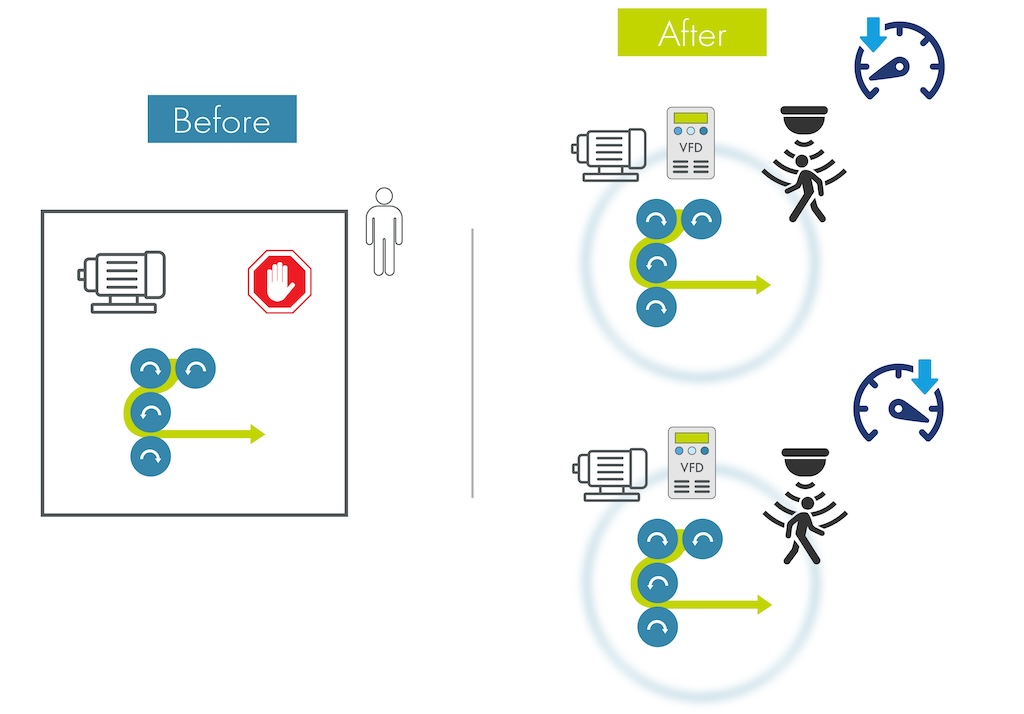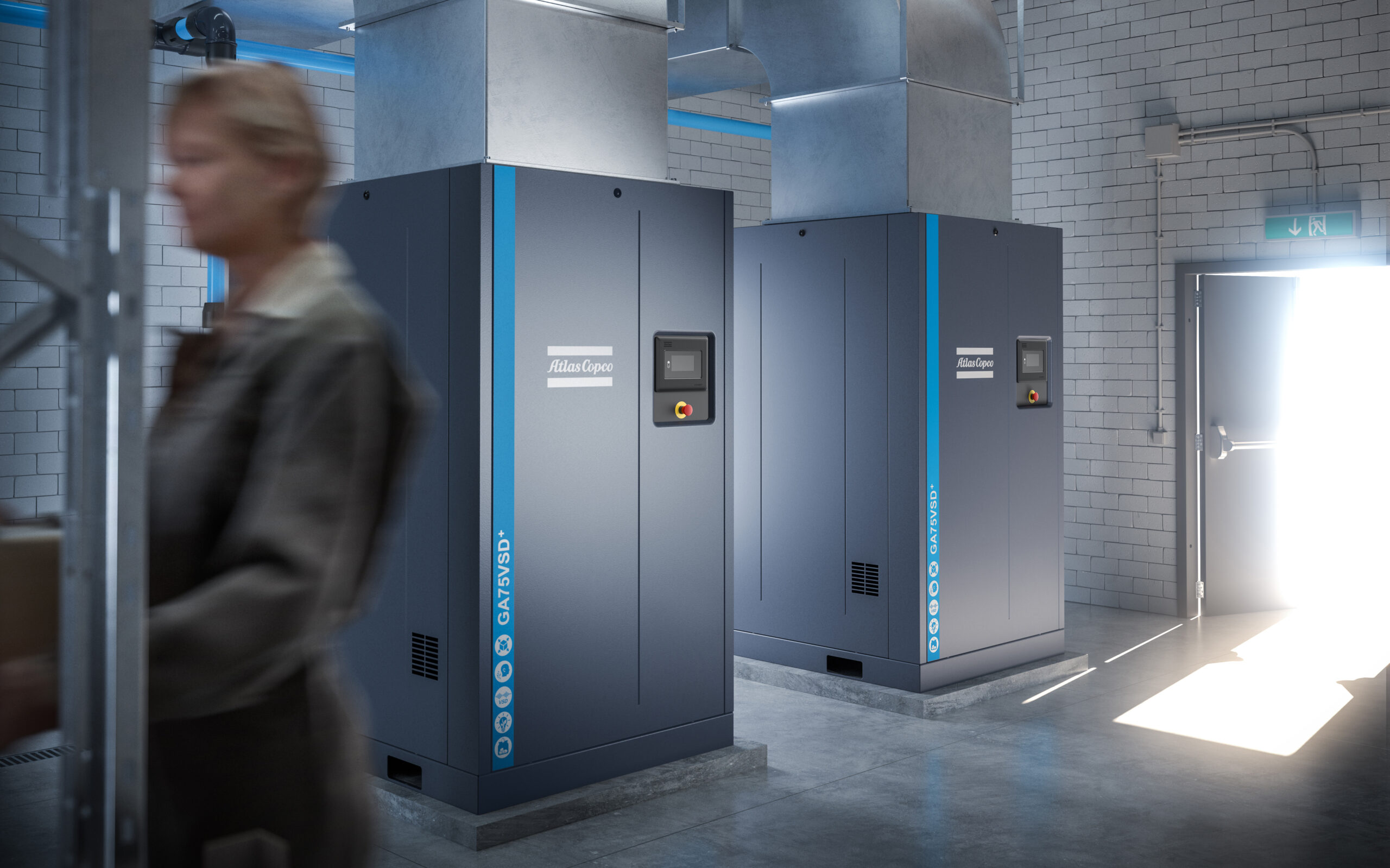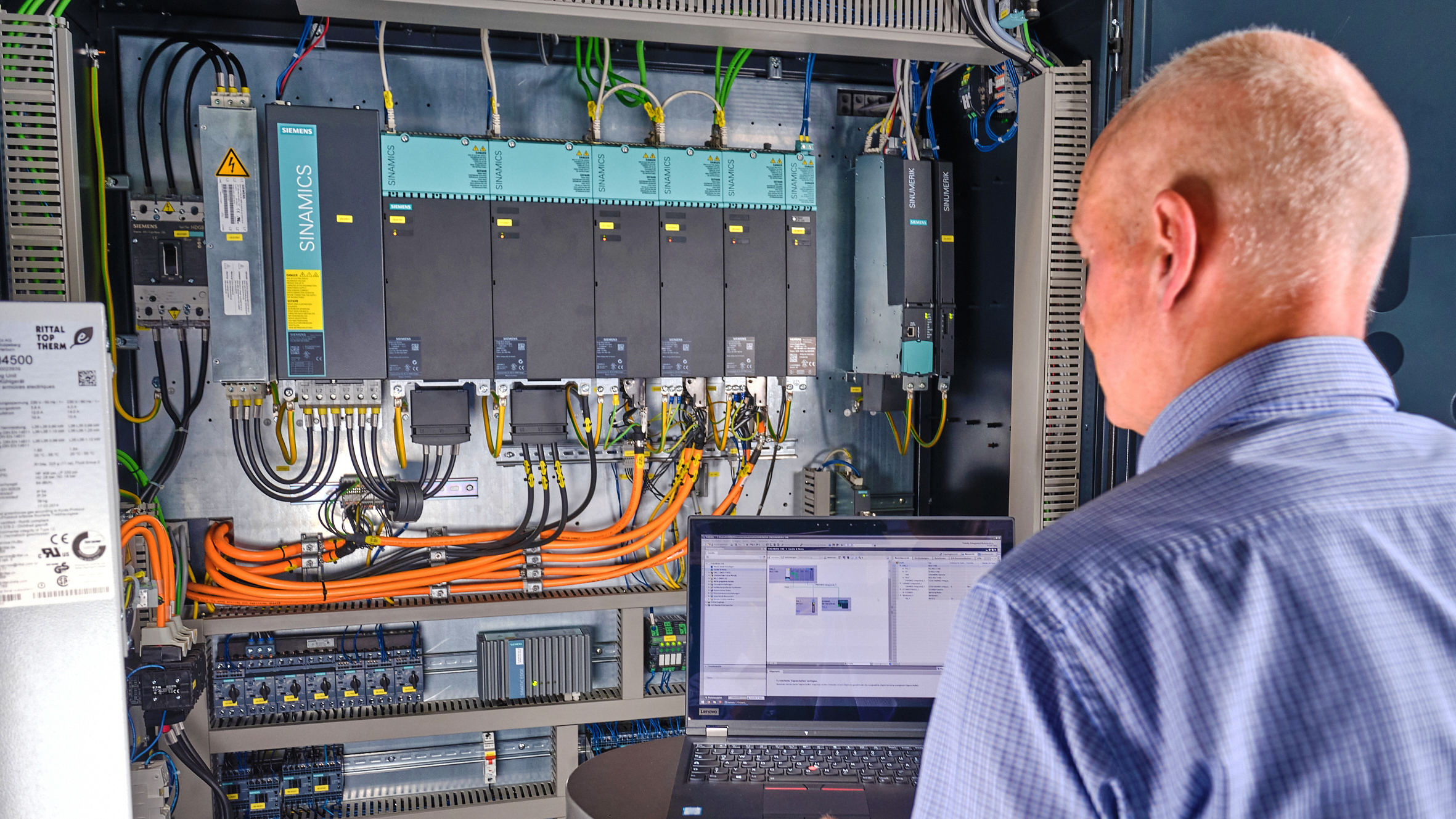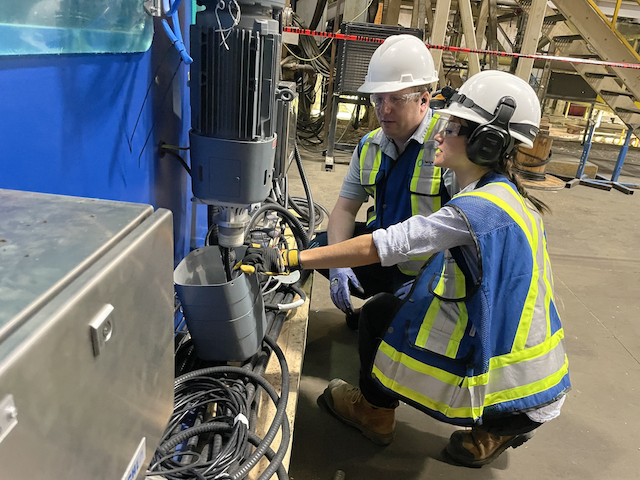It's a tough job supplying clean, dry compressed air to a plant air system. A 1000-scfm compressor operating 24 hr/day, 7 days/wk for 50 wk typically pumps out 577,600 lb of water vapor, 3111 lb of dirt, and 194 lb of oil (@ 5 ppm).
It’s a tough job supplying clean, dry compressed air to a plant air system. A 1000-scfm compressor operating 24 hr/day, 7 days/wk for 50 wk typically pumps out 577,600 lb of water vapor, 3111 lb of dirt, and 194 lb of oil (@ 5 ppm). This amount is more than a filter and dryer can handle alone. Since water is by far the largest component, it must be controlled.
Anyone responsible for maintaining and operating plant compressed air systems is aware of problems caused by water. The problems are very apparent to those who operate pneumatic tools, automatic air-powered machines, sandblasting equipment, pneumatic logic devices, air gauging, and paint spray equipment.
Increased use of control systems and automatic machinery has made these problems serious and caused increased awareness of the need for better quality compressed air. Air purification equipment, including aftercoolers, separators (Fig. 1), traps, dryers, and filters, should be a part of any system.
Aftercoolers
An aftercooler is usually recommended for all installations because it is an economical way of reducing the moisture content and removing the heat of compression of compressed air (Fig. 2). Some compressors can function without a separate aftercooler, particularly oil-flooded screw compressors, which have a discharge temperature approximately 100-deg F above ambient.
However, no aftercooling only results in hot, wet air instead of warm, wet air delivered to the system. The temperature of compressed air leaving a typical compressor can vary from 180-350 F, depending on the type of compressor, its method of internal cooling, number of compression stages, and ambient temperature.
Some plants can use uncooled air, just as it leaves the final compression stage, such as forges, foundries, and certain processes. However, such installations are rare.
An aftercooler is always recommended for instrument and general plant air. Normally, aftercoolers are designed for the worst combination of conditions. When a dryer follows the aftercooler, the dryer has a maximum recommended inlet temperature and this specification must be met by the aftercooler.
As a general rule, oversizing aftercoolers is cost effective. Cooler discharge air has a lower moisture content, easing the task of the dryer; and is more dense, permitting greater mass flow at the same system pressure drop. Also, larger aftercoolers are likely to have less pressure drop and reduced tube-fouling problems during use. One caution is that many aftercoolers are equipped with attached separators and care must be exercised to ensure that the unit selected does not have a separator that is too large to be effective.
Aftercoolers are cooled by air or liquid. The liquid almost always is water. Usually, larger units are water cooled. The temperature and quantity of available coolant are key factors in selecting the type of aftercooler.
In areas where water is expensive, its price must be weighed against the cost penalties of warm, compressed air. Larger systems can justify cooling towers, which are frequently seen in southwestern states. Air-cooled systems are more conveniently adaptable to heat recovery installations and favored when water and sewer costs are prohibitive. Rotary screw compressors are predominantly supplied in an air-cooled configuration up to 500 hp.
For the best economy, coolant flow should be controlled. Where fresh water is used and then discarded, or where the demand for water exceeds reuse needs, the cost of a temperature control can be recovered, usually within 1 yr. The temperature used as a basis for control can be outlet air, outlet water, or operating approach, usually referred to as the cold temperature difference (CTD) (Fig. 3). A modulating valve should always be installed on the water discharge side of the cooler. Precautions should be taken to handle any solids that settle out of the water when there is no flow.
Higher costs are justified for aftercoolers that can be disassembled for cleaning, such as water-cooled tube-and-shell designs. A dirty aftercooler costs in two ways: It delivers warmer air and has excessive air pressure drop. Always select a maintainable unit. This factor is particularly important for systems using lubricated compressors.
If the ambient air is at a high temperature and high relative humidity, large amounts of moisture are taken into the compressor. It takes more latent cooling to condense this moisture in the aftercooler and less cooling is available for sensible cooling of the air. The lower the required CTD, the larger the aftercooler required. When a lower CTD cooler is selected the price increases. However, because the discharge air is at a lower temperature, there may be a savings by being able to select a smaller air dryer.
Air or water cooled?
The decision to use air or water cooling is based on four factors. Their order of importance is:
– Ambient air temperature and ventilation conditions
– Availability, cost, and temperature of cooling water
– Required compressed airflow and temperature
– Feasibility of a heat recovery system.
Water-cooled units provide better heat transfer and do not require electrical power. They are often recommended if water cost is not excessive. Air-cooled aftercoolers can be installed outdoors if a clean area is available near the compressor (Fig. 4). Outdoor installed, air-cooled units must be protected from cold weather freezing of condensate by a thermostatically controlled heater. Air-cooled aftercoolers are more easily applied to heat recovery. Since 65-80% of input power can be made available as heat, the recovery efficiency of an aftercooler is a prime factor in deciding the type chosen.
Heat recovery
Most of the prime mover energy applied to compressing and conditioning air is lost as heat carried off from the compressor cooling system, intercooler, and aftercooler. When this heat can be recovered and used, significant cost savings are made.
Adiabatic compression of air to 100 psi results in high outlet-air temperatures. When this air is cooled to ambient temperatures, 60-90% of the energy of compression is removed and can be used for other purposes. This heat is a low-grade source of energy available year-round. Typical uses include supplemental space heating, boiler makeup water preheating, and process heating.
If a regular all-season use of this heat source can be found, heat recovery efficiency increases. Since 80% of the input energy is available as heat, and if this heat can be used, then the 20% of energy used to compress air is the cost of doing business. In multiple unit systems, the compressors should be located near areas requiring space heating to minimize ducting requirements, if air pressure control stability considerations permit it.
Several manufacturers market packaged air compressor/heat recovery systems for air-cooled systems greater than 50 hp and water-cooled systems greater than 125 hp. When designed as a complete system, the capital investment is low and the return high. The cost can usually be recovered in 1-3 yr. The engineering of such systems should always include input from HVAC engineers.
Rotary screw, oil-flooded, or oil-free compressors are good candidates for heat recovery and supplemental space heating in sizes greater than 50 hp. Heat exchangers and fans normally are incorporated in standard air compressor designs to cool the oil and compressed air. The only modification required to incorporate heat recovery is suitable ducting to permit adjustable channeling of air from inside and outside of the building and a higher pressure distribution fan to handle duct loading.
When space heating is required, air is drawn from both inside and outside the building, heated, and delivered to the heated spaces. In summer, all heated air is exhausted unless there is a use for it elsewhere in the plant.
The energy available at full compressor load is typically 56,000 Btu/hr/100 cfm of compressor delivery with possible efficiencies of 85-90%. This amount comes to approximately 50,000 Btu/hr/100 cfm of recoverable energy at temperatures between 120-200 F. This type of recovery can only supplement a building heating system for two reasons: The air compressor operates cyclically, varying from no load to full load; and it is usually off during the night when there are no heating requirements. Although air compressors may consume 10-15% of plant power, this may not be enough to supply all heating requirements.
Water-cooled air compressor heat recovery is difficult, because the additional stage of heat exchange and lower temperatures involved reduce the overall recovery efficiency to 55-60%. It is only economically attractive for compressors over 125 hp or in regions with unusually high heating costs.
In estimating the value of a heat recovery system, it is important to note that 1 Btu of energy recovered can typically save 1.6 Btu of fuel required to produce the same heat. This 1.6x adjustment accounts for the combined effects of heating system efficiency and the heater part-load correction factor. The part-load correction factor considers losses due to heating up and cooling down when cycling. This factor is applicable to unit area heaters used in factory heating.
Separators
A number of different types of separators are available to remove condensed water from the airstream (Fig. 5). The most common type uses the centrifugal principle, which drops out most of the liquid to a drain or sump. Moisture is periodically discharged by a manually or automatically opened drain valve. Gravity types are not popular because of the large amount of space they require.
Centrifugal, cyclone, and impingement separators have a low pressure drop. Since they are designed for a specific flow rate which determines velocity and operating force, they should not be oversized. If the flow rate is expected to be highly variable, it may be advantageous to connect several separators in series, each designed for a different range of airflow rates.
Cyclone and impingement separators can be used efficiently and with a reasonable pressure drop when water particles are larger than 10 microns. Neither separator is efficient when water droplets and aerosols to be removed have a wide range of diameters.
Separators are usually supplied with aftercoolers. Therefore, it is important to specify the design airflow for the system, particularly when using an oversized aftercooler. Since the pressure drop across a properly sized separator is approximately 3 psi, a poorly specified separator cannot function properly and could waste 2% of the energy input to the air system.
Traps and drains
Traps and drains collect liquids from the aftercooler and manually or automatically release this condensate while minimizing the discharge of compressed air.
There are many different types of manual and automatic traps and drains. Manual units range from a simple petcock to a ball, gate, or globe valve. The simplest type of mechanical, automatic trap consists of a ball-float arrangement that activates when rising water reaches a preset level. No power is required to open this type.
The least complicated power-activated drain is a solenoid type energized by a timer signal. Electric motor-driven units are available with solid-state controls to program the time intervals between opening and the duration of the cycle. Other electronic units sense liquid levels — both high and low — to determine when to open and close, minimizing compressed air losses. Pneumatically activated drains have the interval between openings and duration of the opening timed by air logic controls.
Plant Engineering magazine extends its appreciation to R. P. Adams Co., Penn Separator Corp., and Ingersoll-Rand Co. for their assistance in the preparation of this article. The cover picture was taken with the cooperation of the Compressor Engineering Div. of Amco Industries, Itasca, IL. — Joseph L. Foszcz, Senior Editor, 630-320-7135, [email protected]
Key concepts
Air compressors may pass huge amounts of water and contaminants into a plant system.
Aftercoolers economically reduce the amount of moisture in compressed air, which enables dryers to work efficiently.
Heat recovery from aftercoolers can be used for process or space heating and attain efficiencies up to 90%.
Aftercooler selection factors
– Airflow rate
– Required discharge temperature
– Required cold temperature difference (CTD)
– Air inlet temperature and humidity
– Coolant conditions
– Will a dryer be used?
– Availability and cost of cooling water, or cost of blowing cooling air
Problems with water in compressed air
– Washes away required lubricant
– Forms rust and scale in pipes
– Increases wear, maintenance, and malfunctioning of pneumatic devices
– Spoils product by spotting paint and other types of sprayed finishes
– Rusts sandblasted parts
– Freezes in exposed pipes during cold weather
– Condenses and freezes at the exhaust of air devices
Recommendations for water-cooled aftercoolers
– Intentionally oversize aftercoolers to improve economy, because some designs have a high pressure drop (3-5 psi) at rated flow.
– Reduce water and sewage costs by installing a modulation control on the cooling water supply (especially recommended for oversized aftercoolers).
– Throttle water flow on the discharge of the aftercooler, which keeps the aftercooler full of water and under pressure.
– Install aftercoolers indoors in a horizontal position for best performance. Space should be provided for pulling and cleaning tubes.
Air-cooled aftercooler savings
– No water or sewage charges
– No water treatment or descaling required
– Simple waste heat recovery
More info
The Compressed Air Challenge is offering a seminar entitled “Basic Training in Compressed Air Systems” which covers all aspects of improving a compressed air system. Get additional information by visiting their web site, www.knowpressure.org or by calling 800-862-2086.
Three previous articles discussed removing moisture from compressed air: “Dew Point in Compressed Air Systems” (PE, July 1996, p 72, File 4030); “Choosing the Right Compressed Air Dryer” (PE, April 1997, p 80, File 4030); and “Removing Moisture in Compressed Air Systems” (PE, December 1998, p 78, File 4030).
See the “Compressors & prime movers” channel on www.plantengineering.com for the text of the articles mentioned above and others related to this topic.



